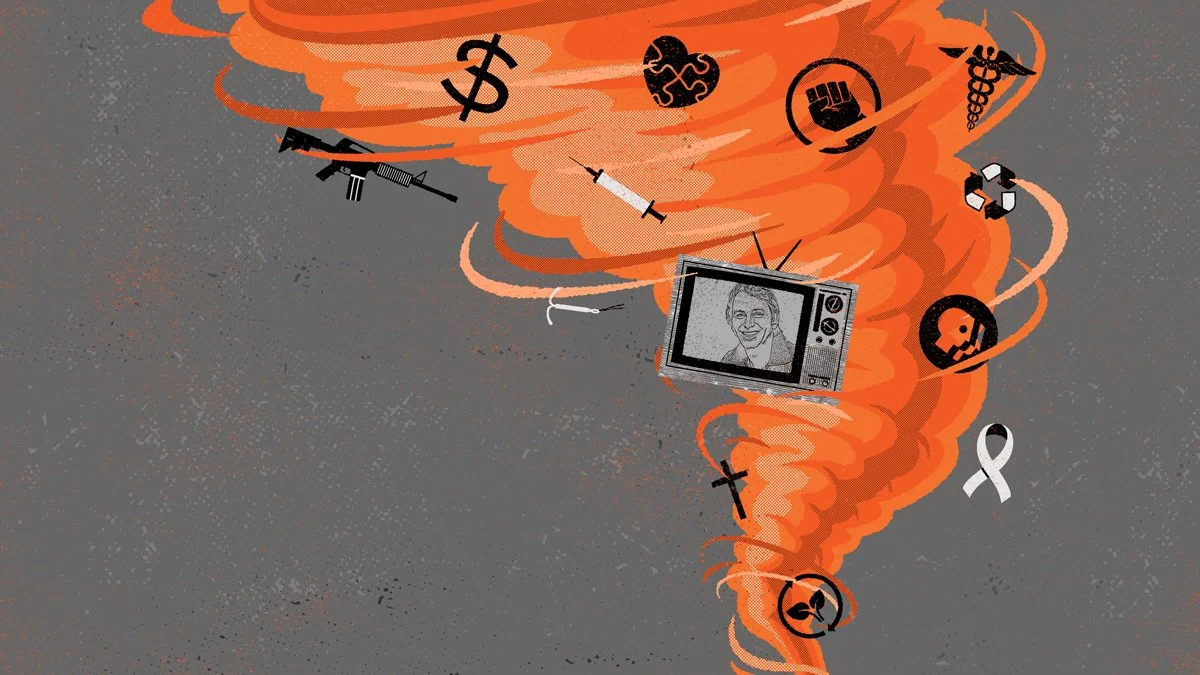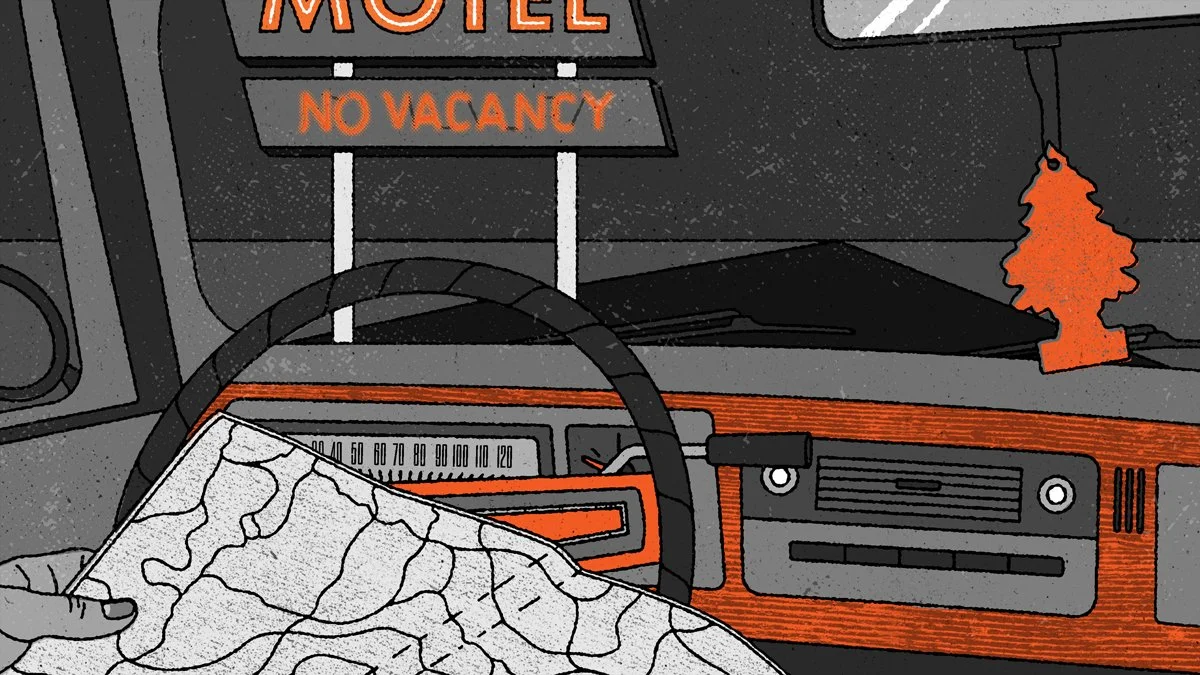Insights | Articles
When truth gets twisted: three ways to combat misinformation.
My job is to study people, specifically what motivates the decisions they make. I started when I was about seven years old in the TV room. Shows like Three’s Company, I Love Lucy, and The Odd Couple were built entirely on misunderstandings. Someone overheard half a conversation, misread a situation, or jumped to a conclusion. A single wrong assumption would spiral into a comedy of errors. Most importantly, the audience always knew the truth, which made watching the confusion unfold even funnier. Back then, misunderstandings made for great television.
Today, misinformation is a different story. Behavioral science helps explain why misinformation spreads so easily and why it’s so hard to correct. For nonprofits and foundations, this dynamic poses a real challenge: how to communicate truth in a way that cuts through noise, earns trust, and doesn’t get lost in the scroll. So here are three ways to respond.
The Courage to Fix Things: Ways to Refocus for Greater Impact
I was reminiscing with a coworker about a younger version of our firm (and me) and recalling some big risks. Thankfully, most paid off well, and I’m grateful for those outcomes. My next thought was, why with so much less experience, was I so confident? How could I have been so bold, and where did that gumption go?
I’ve come to realize that early in our careers, we sometimes succeed because we don’t know better. Next comes a certain timidity that stems from having gotten a taste of failure. Eventually, you move past timidity to the real work – fixing things. For those in this stage of their careers, or those ready to begin it, I thought it might be helpful to share the most common mistakes I see and how to fix them.
From history class to today’s headlines: five ways to defend against division.
Majoring in history was one of the best decisions I ever made. I love the objectivity and detached analysis of the causes of major events, and how those events contribute to a much larger unfolding of consequences. I’ve always found comfort in knowing that whatever today’s troubles may be, we’ve been through something similar many times before.
But not everyone shares that comfort. When the pace of change feels relentless and the noise around us becomes deafening, perspective is the first thing to go.
That’s because our minds are wired to instill belonging, manage uncertainty, and make sense of complexity. There’s real science behind why we’ve drifted so far apart, and nonprofits can benefit from understanding it. Here are five leverage points to keep in mind.
Blue skies and bubble wrap.
I don’t think well sitting still. And many years ago, there was a gallery around the corner from my office. Whenever I got stuck, that’s where I’d go to pace and ponder.
For months, I was especially enamored with one of the paintings. What the gallery owner called a “statement piece,” it was all blue sky and cumulus clouds, six feet long by two feet high. I was 29 years old when I bought it as a celebratory gesture after being named a VP. October had just begun when I took it uptown to be framed.
Cut to a call in February asking when I wanted my newly framed piece delivered. In between, the dot-com bubble had burst, taking my job with it. Now all I saw within the frame was fear, dollar signs, and regret. Taking the subway downtown in the cold, lugging a six-foot canvas covered in bubble wrap, is something I’ll never forget. So, there’s a little déjà vu when I think about today’s climate for many nonprofits.
Things looked so good, then so grim. It feels awful because we have a systematic bias toward assuming continuity rather than volatility. But nothing is ever as good or bad as it seems. Here are five steps to help your team deliberate and see its way through the clouds.
Leading through whiplash: finding stability in change.
My dog Hazel knows what I’m going to do before I do it. Reaching for my running shoes prompts spin-arounds, and my keys cue a rush to the door. Her behavior reminds me that I have rituals and calcified routines I don’t even realize. Similarly, there are behavioral anchors within our organizations. We’ve nurtured and cultivated programs for years and found conviction in their outcomes.
That makes the recent chaos in our sector feel more upending than simply unsettling. The pace of change, intentional by the current administration, hasn’t allowed leaders time to plan or develop contingency strategies.
Change isn’t a choice, but resistance to it is deeply rooted in how our brains are wired. A better understanding of this can reveal how this avoidance may not be serving ourselves or our organizations. So here are the biggest reasons we resist and four steps for achieving the opposite.
Cracking the code of mental money quirks for more successful fundraising.
We all have differing financial priorities, but what fascinates me is the behavioral economics concept that drives them, mental accounting. Logically, we know a dollar is a dollar, but we don’t behave that way. Mental accounting is about how people irrationally code, categorize, and evaluate money, leading them to make biased and sometimes irrational decisions. Implemented properly, nonprofits can benefit a great deal from this concept, particularly when it comes to leveraging five tendencies in fundraising.
Shape your narrative, or be shaped by its gaps.
Mrs. Baughman said we were going to elect a classroom president. Someone nominated me. I guess the point was to teach us fourth graders how democracy worked. The ballot was secret, but voting for myself felt boastful. Of course I lost the election — by one vote.
I think many cause leaders similarly undersell themselves. Sometimes modesty is the culprit. Other times it’s because they haven’t prioritized communications.
But as we’ve seen a lot lately, if you don’t control your narrative, someone else will.
I know the reasons communications isn’t a priority. I also know the most frequent mistakes nonprofits and foundations make. So here’s four angles on how we can improve, plus a process that reveals an easier way to do so.
Less telling, more listening: the art of shared understanding in donor, beneficiary and staff communications.
As comfortable as painting in my studio is, I have to venture out occasionally to try and up my game. This involves traveling to workshops where the other artists are usually more accomplished than me, and I’m playing over my head on purpose. It’s completely exhausting, and completely worth it.
The very best instructors don’t want you to paint like them or follow instructions. They move from one person’s easel to the next, asking questions about your process and struggles. It would be easy for them to “fix” your canvas, but instead, through extremely focused dialogue, they problem-solve with you. In more scientific terms, this is called Collaborative Troubleshooting. And it can benefit most anything, from improving my painting to parenting your teenager.
But there’s one place it’s practiced too infrequently: cause communications. Nonprofits plead for help from donors. Prevention messaging attempts to threaten and scare. Executives keep staff on a need-to-know tether. Here’s a better way to handle those three dialogues and how each can benefit from collaborative troubleshooting.
Four and a half hours from home: a formula for uncertain times.
Summer has me thinking back on the vacations of my youth. They involved a potent mix – Myrtle Beach and the 1970s. Part of the ritual was my dad steering our land yacht past the many-themed motels on Ocean Drive, scouting for vacancies.
What I can’t believe is that we drove four and a half hours – without knowing where we were going to stay. But now we’ve all grown accustomed to planning everything. We try to achieve that same predictability at work. Beyond an HR surprise here and there, we pretty much know what to expect. Until recently.
For many, this is like being far from home and not knowing if we have a room for the night. I can’t promise the road ahead will be smooth, but a little behavioral science — and a four-step formula for action — might make the ride easier.
More isn’t a winning strategy. Two steps to decide what’s enough.
How much is enough? Most people can’t answer this question. Based on actions, not words, “more than I have” seems accurate. But “more” is not a finite answer. It’s an elusive objective. The lack of consensus on “How much is enough?” is the biggest source of conflict there is.
Today’s political rancor is but the most current expression of a timeless squabble over the distribution of wealth. It’s left us to worry about our organizations, the people we serve, and society at large. In this time of unknowns, our organizations could soothe themselves with more certainty in answering “How much is enough?” Read on to learn how these two steps can help you do just that.










